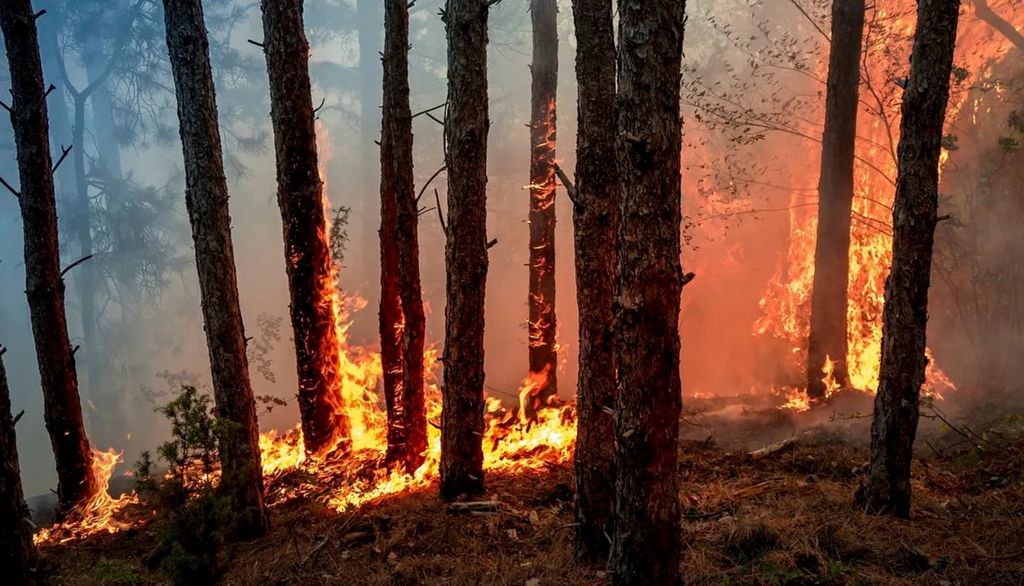Follow us on Google News (click on ☆)
Nonetheless, if the results of Maxime Parot's laboratory work are validated on a larger scale, we might one day see water bombers dropping a gel made from wood-based molecules along wildfire edges to stop their advance.

For a forest fire to ignite and spread, four elements are necessary: fuel, oxygen, heat, and a chain reaction. The gel developed by researchers at Université Laval acts on all four.
Patrick Bourgeois
This postdoctoral intern, a member of Professor Alexis Achim's team in the Department of Wood and Forest Sciences, presented the findings of his research — which evaluated the effectiveness of a gel made from wood-based molecules in fighting wildfires — during the Faculty Symposium of the Faculty of Forestry, Geography, and Geomatics, held on November 21–22 on campus.
This gel is composed mainly of water and cellulose, a polymer that constitutes about 50% of the mass of wood and is naturally combustible, Maxime Parot explains. "More specifically, we use cellulose filaments, which can be a few millimeters long but are only a few nanometers thick. The three-dimensional network formed by these filaments traps water molecules, which delays the combustion of the gel. Additionally, we add an agricultural fertilizer, diammonium phosphate, which slows down the chain reaction that occurs during combustion."
To assess the gel's effectiveness, the postdoctoral researcher exposed small samples (4 in x 4 in x 0.4 in) of black spruce to a heat source of 35 kW/m2. "Without the gel, the wood catches fire after 40 seconds. When the gel is applied to the wood, it takes an additional six minutes for the wood to ignite. Furthermore, the heat released by the wood's ignition is 44% lower than in tests conducted without the gel. By adding lignin, another molecule found in wood, to our gel, we reduce the heat produced by 75%."
Four conditions are necessary for a forest fire to ignite and spread, Maxime Parot continues. "You need fuel, oxygen, heat, and a chain reaction. The gel we developed prevents the fire from reaching the fuel (the wood), blocks oxygen flow, reduces heat production, and slows down the chain reaction thanks to the diammonium phosphate. So, it acts on all four key elements of forest fires."
There is still much work to be done to transition this idea from the lab to the field, the postdoctoral researcher acknowledges. "I first need to conduct tests on larger wood samples using higher temperatures to replicate what happens in the field during a forest fire."
Economic analysis also remains to be done. "It is certainly more expensive than water," he admits, "but we need to consider the savings achieved by better protecting human infrastructure and forests." Such savings could climb quickly, given the increasing frequency and intensity of forest fires expected due to climate change.